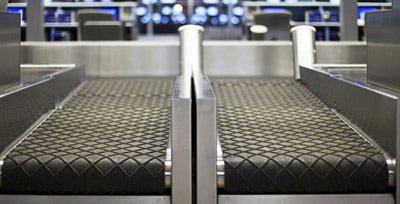Self-service crucial to managing growth at Chinese airports
Posted: 19 November 2015 | Katie Sadler, Digital Content Producer, International Airport Review | No comments yet
According to the latest SITA / ACI 2015 Airport IT Trends Survey, 100 percent of airports in China now provide self-service check-in kiosks to manage increasing passenger numbers. Results of the latest Airport IT Trends Survey, carried out by SITA, the air transport communications and IT solutions provider and co-sponsored by Airports Council International (ACI), […]


According to the latest SITA / ACI 2015 Airport IT Trends Survey, 100 percent of airports in China now provide self-service check-in kiosks to manage increasing passenger numbers.


Results of the latest Airport IT Trends Survey, carried out by SITA, the air transport communications and IT solutions provider and co-sponsored by Airports Council International (ACI), reveal 100 percent of Chinese Airports surveyed now provide self-service check-in kiosks. By 2018, 77 percent will offer kiosks for self-bag tagging and 68 percent will offer unassisted self-service bag drop and boarding. This indicates a strong progression to an end-to-end self-service passenger experience in China.
The research, representing the views of all major airports in China which together serve more than 60 percent of all Chinese airline passengers, emphasised the importance of passenger processing with 77 percent of Chinese airports rating the service as a number one priority, compared to 53 percent last year.
Join us live: Shaping the Next Generation of Hold Baggage and Air Cargo Screening
Join us live for an insightful webinar on 11th December at 14:00 GMT, in collaboration with Smiths Detection, as we explore the strategic balance of operational efficiency, regulatory compliance, and sustainability in high-volume security environments.
This session offers a focused look into future-proofing your security strategy.
Key learning points
- Cost Reduction: Strategies to minimize bag travel time while simultaneously reducing operational costs.
- Regulatory Roadmap: Insights into the next wave of regulatory changes and their impact on future investment decisions.
- Sustainable Systems: Practical approaches to building sustainability into security systems and lowering the total cost of ownership (TCO).
- Scalable Solutions: Real-world examples of scalable systems supporting current airport growth and preparing for tomorrow.
Register now for expert insights, case studies, and actionable strategies on operational efficiency!
“China will enjoy the benefits of investments in smart technology for smarter airports over the coming years.”
May Zhou, Vice President, SITA China said: “Rising passenger numbers continue to present a challenge to China’s airports in terms of infrastructure and resources. There is of course much construction and expansion underway but it will take some time to match the growth in traffic. Meanwhile, technologies such as self-service, mobile and business intelligence can improve the passenger experience today.
“These technologies can help airports provide faster check-in, real-time updates, reduced queues and faster aircraft turnarounds. All of the airports surveyed expect IT budget increases in 2016 which indicates that passengers in China will enjoy the benefits of investments in smart technology for smarter airports over the coming years.”
“Technologies such as self-service, mobile and business intelligence can improve the passenger experience today”
Airport business intelligence initiatives are also being used more widely to collect data in order to make improved decisions. In the next three years 82 percent of airports will use initiatives to monitor passenger flow and 72 percent operations.
Improving the allocation of resources by tracking vehicles and other mobile assets around the airport is also set to become standard operational practice over the next three years with 90 percent of leading airports introducing this by the end of 2018.
Results also reveal airports are investing in mobile services for passengers. A total of 77 percent of airports already provide flight status notifications via mobile and 95 percent plan to offer them by the end of 2018. By then, two-thirds of airports (66 percent) also plan to introduce stress-reducing features, such as way finding and queue wait times.
Airports are also embracing social media and already 67 percent of China’s major airports provide flight status notifications to passengers in this way. This is well ahead of the global average (33 percent) and is expected to increase to 95 percent over the next three years.
Stay Connected with International Airport Review — Subscribe for Free!
Get exclusive access to the latest airport and aviation industry insights from International Airport Review — tailored to your interests.
✅ Expert-Led Webinars – Gain insights from global aviation leaders
✅ Weekly News & Reports – Airport innovation, thought leadership, and industry trends
✅ Exclusive Industry Insights – Discover cutting-edge technologies shaping the future of air travel
✅ International Airport Summit – Join our flagship event to network with industry leaders and explore the latest advancements
Choose the updates that matter most to you.
Sign up now to stay informed, inspired, and connected — all for free!
Thank you for being part of our aviation community. Let’s keep shaping the future of airports together!


















